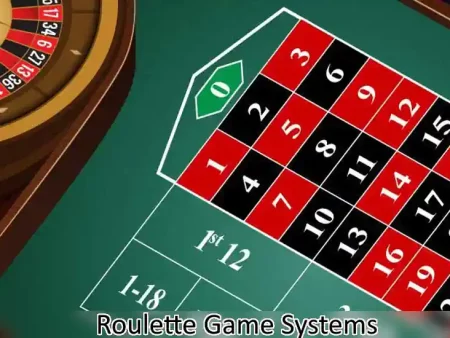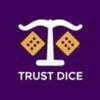Understanding the Craps Game and the rules and betting options available
Understanding the Craps Game and its Various bets

Game Overview
Craps is an exciting game that revolves around dice rolls. Understanding the various bets is key. The first roll is the “come out roll,” where a pass line bet is placed. A roll of 7 or 11 wins, while 2, 3, or 12 results in a loss. If another number is rolled, it becomes the point. The shooter continues rolling until they hit the point or 7. Rolling the point wins, rolling 7 loses. Pass line bets remain unresolved until the point or 7 is rolled.
Crap Rules
Craps is a dice game played in casinos. Here are the basic rules:
- The game begins with a “come out roll” where the shooter (the person rolling the dice) throws two dice.
- If the come-out roll is 7 or 11, it’s a “natural” and the shooter wins. If it’s 2, 3, or 12, it’s “craps” and the shooter loses.
- If any other number (4, 5, 6, 8, 9, or 10) is rolled on the come-out roll, that number becomes the “point.”
- The shooter continues to roll the dice until they either roll the point number again, in which case they win, or they roll a 7, in which case they lose. This is known as “making the point” or “sevening out.”
- Players can place various bets on different outcomes in the game, such as the pass line bet (betting that the shooter will win) or the don’t pass bet (betting that the shooter will lose).
- There are additional bets available, including come bets, place bets, and odds bets, which can be made during the game to increase potential winnings.
- The game continues with a new shooter taking their turn after the previous shooter has either made the point or sevened out.
These are the basic rules of craps, but there are many more betting options and strategies that can be employed in the game.
Crap Betting
In craps, there are various betting options available. Here are some common bets:
- Pass Line Bet: This is the most basic bet in craps. You win if the come-out roll is a 7 or 11, and lose if it’s a 2, 3, or 12. If any other number is rolled, that number becomes the point, and you win if the point is rolled again before a 7.
- Don’t Pass Bet: This is the opposite of the pass-line bet. You win if the come-out roll is a 2 or 3, lose if it’s a 7 or 11, and push (tie) if it’s a 12. If a point is established, you win if a 7 is rolled before the point.
- Come Bet: This is similar to the pass line bet, but it can be placed at any time during the game. You win if the next roll after placing the bet is a 7 or 11, and lose if it’s a 2, 3, or 12. If any other number is rolled, that becomes your come bet point, and you win if the point is rolled again before a 7.
- Don’t Come Bet: This is the opposite of the come bet. You win if the next roll after placing the bet is a 2 or 3, lose if it’s a 7 or 11, and push if it’s a 12. If a point is established, you win if a 7 is rolled before the point.
- Place Bets: These bets are placed on specific numbers (4, 5, 6, 8, 9, or 10) and you win if that number is rolled before a 7. The payouts vary depending on the number.
- Odds Bets: These bets can be placed in addition to pass line, don’t pass, come, or don’t come bets. They are placed behind the original bet and pay true odds, with no house edge. These bets are considered advantageous for the player.
- Field Bet: This bet wins if the next roll is a 2, 3, 4, 9, 10, 11, or 12. Payouts vary depending on the number rolled.
These are just a few examples of the many betting options in craps. It’s important to understand the odds and payouts associated with each bet before placing your wagers.
Casinos with Crap Games
Pass Line Bets
In craps, a Pass Line bet is one of the most common and basic bets you can make. Here’s how it works:
- Place your bet: Before the come out roll (the first roll of the dice), place your chips on the area of the table labeled “Pass Line.”
- Come-out roll: If the come-out roll is a 7 or 11, you win and are paid even money (1:1). If it’s a 2, 3, or 12, you lose. Any other number rolled becomes the “point.”
- Point phase: Once a point is established, the dealer will place a marker called the “puck” on the corresponding number on the table.
- Roll the point or a 7: The shooter continues rolling the dice until either the point number is rolled again or a 7 is rolled.
- If the point is rolled, you win your Pass Line bet and are paid even money (1:1).
- If a 7 is rolled before the point, you lose your Pass Line bet.
- Repeat: The game continues with a new come-out roll, and you can place a new Pass Line bet if you wish.
Pass Line bets have a low house edge, making them popular among players. Remember to familiarize yourself with the rules and payouts before playing to maximize your enjoyment and chances of winning.
Don’t Pass Line Bets
In craps, a Don’t Pass Line bet is the opposite of a Pass Line bet. Here’s how it works:
- Place your bet: Before the come out roll (the first roll of the dice), place your chips on the area of the table labeled “Don’t Pass Line.”
- Come out roll: If the come out roll is a 2 or 3, you win even money (1:1). If it’s a 7 or 11, you lose. A roll of 12 results in a push, neither winning nor losing.
- Point phase: If a point is established (4, 5, 6, 8, 9, or 10), the dealer will place the puck on the corresponding number on the table.
- Roll the point or a 7: The shooter continues rolling the dice until either the point number is rolled again or a 7 is rolled.
- If a 7 is rolled before the point, you win your Don’t Pass Line bet and are paid even money (1:1).
- If the point is rolled before a 7, you lose your Don’t Pass Line bet.
- Repeat: The game continues with a new come out roll, and you can place a new Don’t Pass Line bet if you wish.
Don’t Pass Line bets have a slightly lower house edge compared to Pass Line bets, making them a popular choice among some players. Remember to understand the rules and payouts before playing to make informed decisions.
Come Bets
In craps, a Come bet is similar to a Pass Line bet but can be placed after the point has been established. Here’s how it works:
- Place your bet: After the come-out roll and the point has been established, place your chips in the area labeled “Come” on the craps table.
- Roll the dice: The next roll of the dice becomes your come point. If a 7 or 11 is rolled, you win even money (1:1). If a 2, 3, or 12 is rolled, you lose.
- Point phase: If any other number (4, 5, 6, 8, 9, or 10) is rolled, that number becomes your come point. The dealer will move your bet to the corresponding number on the table.
- Roll the point or a 7: The shooter continues rolling the dice until either the come point is rolled again or a 7 is rolled.
- If the come point is rolled before a 7, you win your Come bet and are paid even money (1:1).
- If a 7 is rolled before the come point, you lose your Come bet.
- Repeat: If you win, you can place another Come bet. If you lose, you can place a new Come bet on the next roll.
Come bets offer the same house edge as Pass Line bets and provide additional opportunities to win during a round of craps. Make sure to familiarize yourself with the rules and payouts to make informed decisions while playing.
Don’t Come Bets
In craps, a Don’t Come bet is the opposite of a Come bet. It allows you to bet against the shooter and the same numbers that a Come bet would be based on. Here’s how it works:
- Place your bet: After the point has been established, place your chips in the area labeled “Don’t Come” on the craps table.
- Roll the dice: The next roll of the dice becomes your Don’t Come point. If a 2 or 3 is rolled, you win even money (1:1). If a 7 or 11 is rolled, you lose.
- Point phase: If a 4, 5, 6, 8, 9, or 10 is rolled, that number becomes your Don’t Come point. The dealer will move your bet to the corresponding number on the table.
- Roll the point or a 7: The shooter continues rolling the dice until either the Don’t Come point is rolled again or a 7 is rolled.
- If a 7 is rolled before the Don’t Come point, you win your Don’t Come bet and are paid even money (1:1).
- If the Don’t Come point is rolled before a 7, you lose your Don’t Come bet.
- Repeat: If you win, you can place another Don’t Come bet. If you lose, you can place a new Don’t Come bet on the next roll.
Don’t Come bets are essentially betting against the shooter and can be seen as the opposite of Come bets. They have a different set of rules and payouts, so make sure to understand them before placing your bets.
Odds Bet
In craps, an Odds bet is an additional bet that can be placed after a point has been established on the Come Out roll. It is a type of bet that offers true odds, meaning there is no house edge. Here’s how it works:
- Place a Pass Line or Don’t Pass Line bet: Before you can make an Odds bet, you must first place a Pass Line or Don’t Pass Line bet.
- Point is established: If the shooter rolls a point (4, 5, 6, 8, 9, or 10) on the Come Out roll, the point is established.
- Place the Odds bet: Once the point is established, you have the option to place an Odds bet. The amount you can bet on Odds depends on the casino, but it’s typically limited to a multiple of your original Pass Line or Don’t Pass Line bet.
- Win conditions:
- Pass Line with Odds: If you placed an Odds bet on the Pass Line and the point is rolled before a 7, both your Pass Line bet and Odds bet to win. The payout for the Odds bet varies depending on the point:
- Point of 4 or 10: Pays 2:1
- Point of 5 or 9: Pays 3:2
- Point of 6 or 8: Pays 6:5
- Don’t Pass Line with Odds: If you placed an Odds bet on the Don’t Pass Line and a 7 is rolled before the point, both your Don’t Pass Line bet and Odds bet to win. The payout for the Odds bet on the Don’t Pass Line is the opposite of the Pass Line Odds bet:
- Point of 4 or 10: Pays 1:2 (or sometimes referred to as “laying the odds”)
- Point of 5 or 9: Pays 2:3
- Point of 6 or 8: Pays 5:6
- Pass Line with Odds: If you placed an Odds bet on the Pass Line and the point is rolled before a 7, both your Pass Line bet and Odds bet to win. The payout for the Odds bet varies depending on the point:
- No house edge: The Odds bet has no house edge, meaning it is a fair bet with true odds. Placing an Odds bet is considered one of the best bets in craps due to the absence of the casino’s advantage.
Remember, the Odds bet is an additional bet that can increase your potential winnings, but it is not required to play craps. It is a way to maximize your bets and take advantage of the favorable odds offered in this particular bet.
Pass Line Odds Bets
To place a Pass Line Odds bet in craps, follow these steps:
- Place your initial Pass Line bet.
- Once the point is established, click the left mouse button on the Craps table outside the PASS LINE bar, below your original pass line bet.
- A Pass Line Odds bet offers true odds, with the following payouts:
- Roll of 4 or 10: Pays 2 to 1
- Roll of 5 or 9: Pays 3 to 2
- Roll of 6 or 8: Pays 6 to 5
- Unlike the original Pass Line bet, you can remove an unresolved Pass Line Odds bet if desired.
Don’t Pass Line Odds Bets
To place a Don’t Pass Line Odds bet in craps, follow these steps:
- After placing your Don’t Pass Line bet and the point is established, click the left mouse button on the right side of your original bet in the Don’t Pass Bar.
- A Don’t Pass Line Odds bet offers true odds with the following payouts:
- Point established as 4 or 10: Pays 1 to 2
- Point established as 5 or 9: Pays 2 to 3
- Point established as 6 or 8: Pays 5 to 6
- You can remove an unresolved Don’t Pass Line Odds bet if desired. However, removing the Don’t Pass Line Odds bet will also remove your original Don’t Pass Line bet.
Come Odds Bets
To place a Come Odds bet in craps, follow these steps:
- Once the come point has been established, click on the left side of the same field where your Come bet is placed. This field corresponds to the come point: 4, 5, 6, 8, 9, or 10.
- A Come Odds bet offers true odds with the following payouts:
- On a roll of 4 or 10: Pays 2 to 1
- On a roll of 5 or 9: Pays 3 to 2
- On a roll of 6 or 8: Pays 6 to 5
- Unlike the original Come bet, you can remove an unresolved Come Odds bet if desired.
Come odds bets are inactive during come-out rolls.
Don’t Come Odds Bets
To place a Don’t Come Odds bet in craps, follow these steps:
- Once the Don’t Come point has been established, click on the left part of the top field within the narrow, uppermost bar. This field corresponds to the Don’t Come point: 4, 5, 6, 8, 9, or 10.
- A Don’t Come Odds bet offers true odds with the following payouts:
- On a roll of 4 or 10: Pays 1 to 2
- On a roll of 5 or 9: Pays 2 to 3
- On a roll of 6 or 8: Pays 5 to 6
- Unlike the original Don’t Come bet, you can remove an unresolved Don’t Come Odds bet if desired.
Field Bets
A Field bet in craps is a wager on the next roll of the dice being 2, 3, 4, 9, 10, 11, or 12. Here’s how it works:
- Place your Field bet in the designated FIELD area on the Craps table before the next roll of the dice.
- If the next roll results in 3, 4, 9, 10, or 11, the Field bet wins and pays even money.
- If the next roll is 2 or 12, the Field bet wins and pays 2 to 1.
- However, if the next roll is 5, 6, 7, or 8, the Field bet loses.
Big 6 And Big 8 Bets
A Big 6 bet is a wager that the number 6 will be rolled before 7, while a Big 8 bet is a wager that the number 8 will be rolled before 7. Here’s how they work:
- Place your Big 6 or Big 8 bet in the corresponding box on the left corner of the craps table.
- If the shooter rolls a 6 or 8 before rolling a 7, your Big 6 or Big 8 bet wins and pays even money.
- Unresolved Big 6 and Big 8 bets can be removed at any time.
Place Bets
There are two types of place bets in craps: place win bets and place lose bets. Here’s how they work:
Place Win Bets:
- Place a place win bet on the numbers 4, 5, 6, 8, 9, or 10 in the “PLACE YOUR BETS” bar under the corresponding number box on the craps table.
- If the chosen number is rolled before a 7, your place-win bet wins.
- The payouts for winning place win bets are as follows: 7 to 6 for numbers 6 and 8, 7 to 5 for numbers 5 and 9, and 9 to 5 for numbers 4 and 10.
Place Lose Bets:
- Place a place lose bet on the numbers 4, 5, 6, 8, 9, or 10 in the “PLACE YOUR BETS” bar under the corresponding number box on the craps table.
- If a 7 is rolled before the chosen number, your place lose bet wins.
- The payouts for winning place-lose bets are as follows: 4 to 5 for numbers 6 and 8, 5 to 8 for numbers 5 and 9, and 5 to 11 for numbers 4 and 10.
Note: Place bets are inactive during come-out rolls, and unresolved place bets can be removed at any time.
Buy Bets
A buy bet in craps is a bet placed on the numbers 4, 5, 6, 8, 9, or 10 with the expectation that the chosen number will be rolled before a 7. Here’s how buy bets work:
- Place a buy bet on the right side of the corresponding number box on the craps table: 4, 5, 6, 8, 9, or 10.
- When placing a buy bet, a vigorish (vig.) of 5% is charged as a commission.
- If the chosen number is rolled before a 7, your buy bet wins.
- The winnings for buy bets are paid at true odds: 6 to 5 for numbers 6 and 8, 3 to 2 for numbers 5 and 9, and 2 to 1 for numbers 4 and 10.
- If a buy bet is lost or removed, the 5% vigorish is returned.
Note: Buy bets are inactive during come out rolls.
Lay Bets
A lay bet in craps is the opposite of a buy bet. It is a bet that 7 will be rolled before the numbers 4, 5, 6, 8, 9, or 10. Here’s how lay bets work:
- Place a lay bet on the right side of the top, unlabeled bar above the corresponding number box on the craps table: 4, 5, 6, 8, 9, or 10.
- When placing a lay bet, a vigorish (vig.) of 5% is charged as a commission.
- If a 7 is rolled before the chosen number, your lay bet wins.
- The winnings for lay bets are paid at true odds: 5 to 6 for numbers 6 and 8, 2 to 3 for numbers 5 and 9, and 1 to 2 for numbers 4 and 10.
- Lay bets are active even during the come out roll, meaning they can be placed at any time.
- Unresolved lay bets may be removed if desired.
Any 7 Bet
An “any 7” bet in craps is a wager that the next roll of the dice will result in a 7. Here’s how it works:
- Place an “any 7” bet on any single roll of the dice by placing your chips in the “Seven” field on the craps table.
- If a 7 is rolled on the next roll, you win and receive a payout of 4 times your original bet.
That’s it! If luck is on your side and a 7 comes up, you’ll earn a nice return on your “any 7” bet.
Any 11 Bets
An “any 11” bet in craps is a wager that the next roll of the dice will result in an 11. Here’s how it works:
- Place an “any 11” bet on any single roll of the dice by placing your chips in the box on the craps table that depicts two dice adding up to 11.
- If an 11 is rolled on the next roll, you win and receive a payout of 15 times your original bet.
That’s all there is to it! If the dice land on 11, you’ll enjoy a significant payout on your “any 11” bet.
Casinos with Crap Games
Any Craps Bets
An “any craps” bet in craps is a wager that the next roll of the dice will result in a 2, 3, or 12. Here’s how it works:
- Place an “any craps” bet on any single roll of the dice by placing your chips in the designated “Any Craps” field on the craps table.
- If the dice roll results in a 2, 3, or 12, you win the bet and receive a payout of 7 times your original wager.
That’s all there is to it! If the dice land on one of the specified numbers, you’ll enjoy a payout of 7 times your “any craps” bet.
Horn Bets
A horn bet in craps is a wager that the next roll of the dice will result in a 2, 3, 11, or 12. Here’s how it works:
- Place a horn bet on any single roll of the dice by placing your chips in the designated box on the craps table that represents the combination of 2, 3, 11, and 12.
- If the dice roll results in a 3 or 11, you win the bet and receive a payout of 15 times your original wager. If the dice roll results in a 2 or 12, you win the bet and receive a payout of 30 times your original wager.
That’s all there is to it! If the dice land on one of the specified numbers, you’ll enjoy a payout based on the corresponding odds for that number in a horn bet.
Hardway Bets
A hardway bet in craps is a wager that the shooter will roll a specific number as doubles (2+2, 3+3, 4+4, or 5+5) before rolling a 7. Here’s what you need to know about hardway bets:
- Place a hardway bet by placing your chips in the designated box on the craps table that corresponds to the specific number you’re betting on: 4, 6, 8, or 10.
- To win the hardway bet, the shooter must roll the chosen number as doubles before rolling a 7. For example, if you bet on the hard 8, the shooter must roll a 4+4 combination before rolling a 7.
- It’s important to note that rolling a number by doubles is referred to as rolling the number “the hard way,” distinguishing it from an “easy” roll. For example, a roll of 4+4 is a “hard 8,” while a roll of 5+3 or 6+2 is an “easy 8.”
- If the shooter successfully rolls the chosen number as doubles before rolling a 7, you win the hardway bet. The payout for a hard 4 or hard 10 is 7 to 1, and the payout for a hard 6 or hard 8 is 9 to 1.
- Unresolved hardway bets can be removed if desired.
Remember, hardway bets are inactive during come out rolls by default. That means they are not applicable during the initial roll to establish a point.
Betting Limits
The minimum betting limit for all bets is 1 chip, while the maximum limit for the table or any individual bet is 100 chips. However, there are a few exceptions to the maximum limit:


































